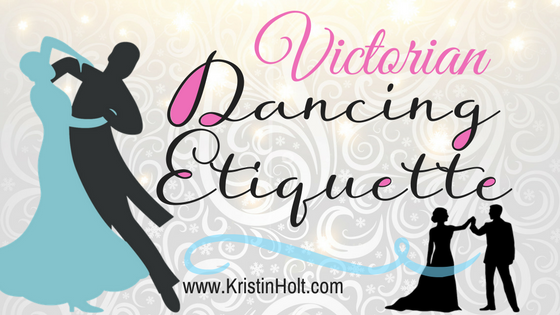
by Kristin Holt | Mar 9, 2017 | Articles
Etiquette governing balls and dances in the American Victorian era seems stuffy, old-fashioned, and strict to 21st century Americans. Every rule of decorum ensured good manners were in play, but most importantly, the moral purity and innocence of young women and young men were maintained. Etiquette governed everything from how a man asked a woman for a dance to how he could properly hold her hand while dancing, to how many dances that pair could have in one evening. This article contains the specifics propriety demanded, and the vintage sources where they may be found. Leap year turned some of the lady’s restrictions upon the men; see the true-to-history newspaper article from 1888 that starred in Sophia’s Leap-Year Courtship.

by Kristin Holt | Mar 2, 2017 | Articles
In the 19th century American West, Gingham was more than checked fabric made of cotton–it was also striped. Any woven cotton cloth made of pre-dyed alternating threads (plaid, striped, or checked) was called gingham. Why would pioneers (or frontiersman, or Old West women) select gingham? What made this fabric practical? Why would we name an anthology with Gingham in the title?

by Kristin Holt | Jan 25, 2017 | Articles
Nineteenth Century Ice Cutting, Part 2 (of 3): Staged as the adventures (and discoveries) of a boy in New England in the late 19th century, Lawrence’s Adventures, published in 1871 in Massachusetts, is instructive and entertaining. One of the chapters focuses wholly on the process of Ice-Cutting, and I share this now public domain content along with era-specific images showing the process. The information about how ice companies actually cut the ice from frozen lakes to provide Victorian America with the tons of ice demanded during the spring, summer, and autumn to sustain perishable food, chill beverages, transport perishable food via train, and aid the sick.

by Kristin Holt | Dec 10, 2016 | Articles
When did U.S. Marshals begin? What were their responsibilities? Can you believe President George Washington signed the Marshals into law for the purpose of working the National Census? Over time, their job description changed, but they’ve been the one law enforcement position with a time-limit. At the turn of the century, Marshals still didn’t have universal badges. My new release, coming December 20, 2016, is a U.S. Marshal turned small-town Sheriff. He’s learning his problems aren’t smaller or easier.
The Marshal’s Surrender
Coming December 20, 2016

by Kristin Holt | Dec 1, 2016 | Articles
Flirting, during the American Victorian era, was often deemed in poor taste (and a sign of low-breeding). Men and women in large cities found a way around the censure–they flirted in the personals column of newspapers. Examples illustrate the personals used requesting an introduction (or interview), private and secretive communications, and to find a lady to begin a courtship. Mother (and/or chaperones) may not have approved…but what she doesn’t know won’t hurt her.













